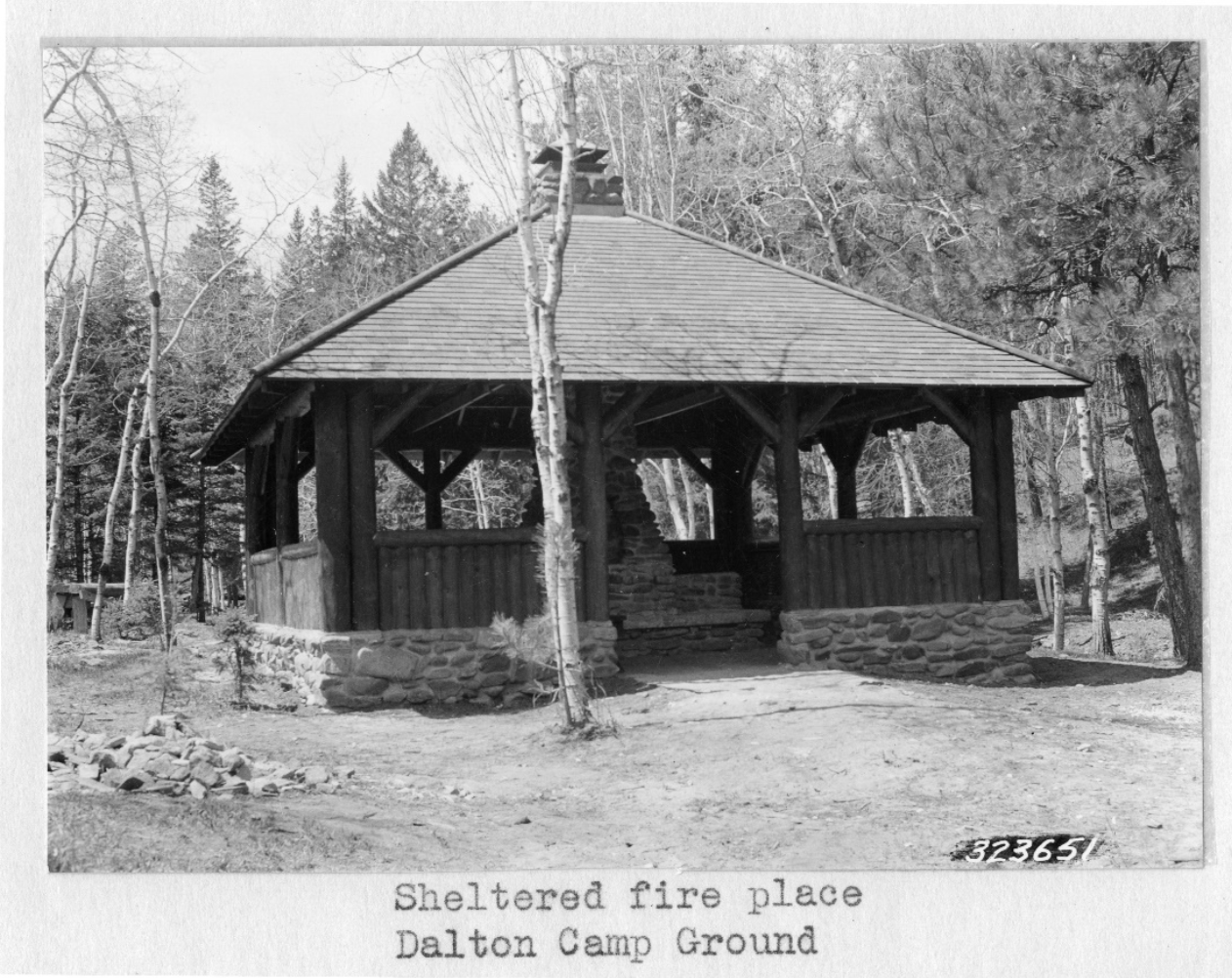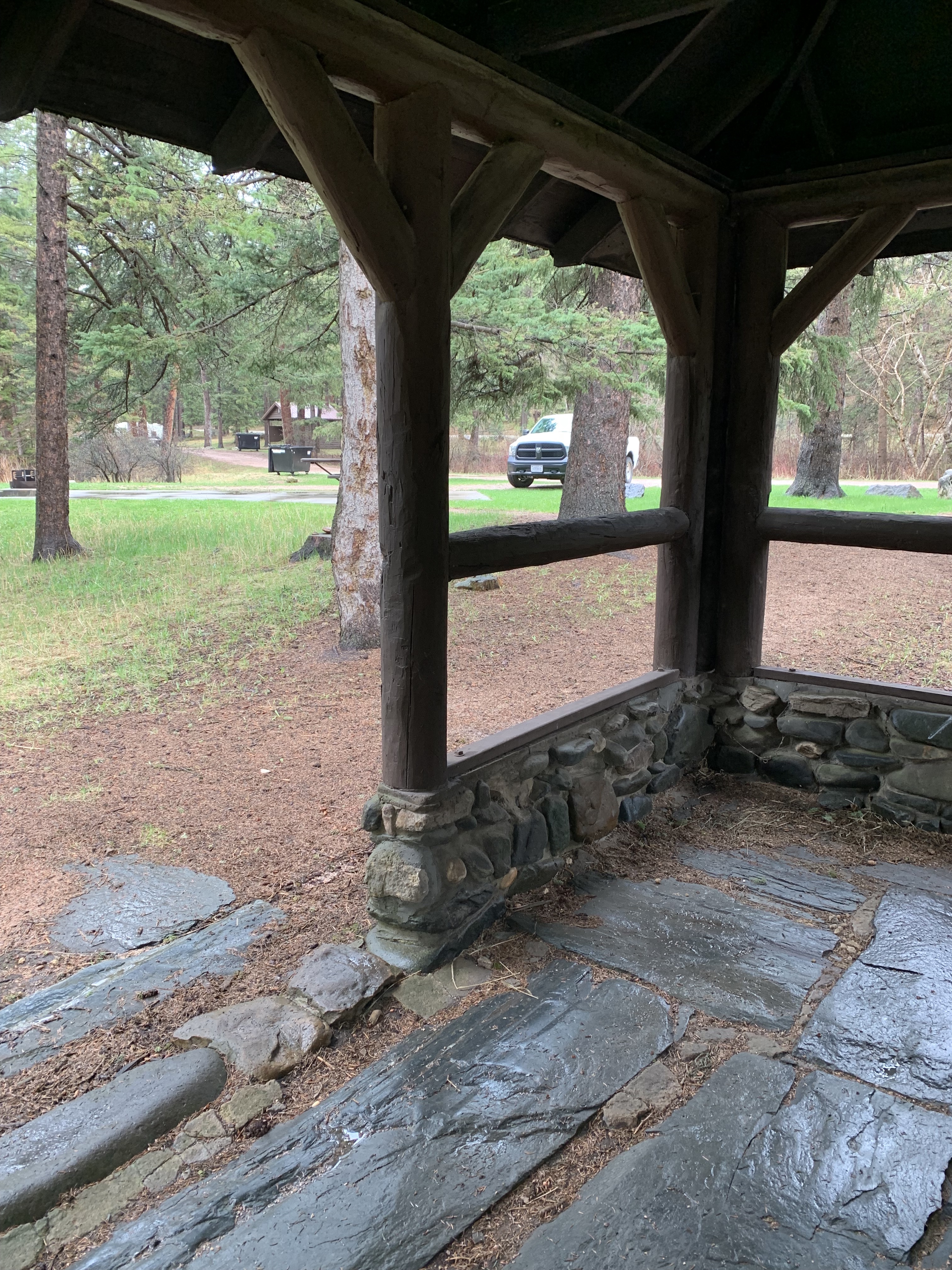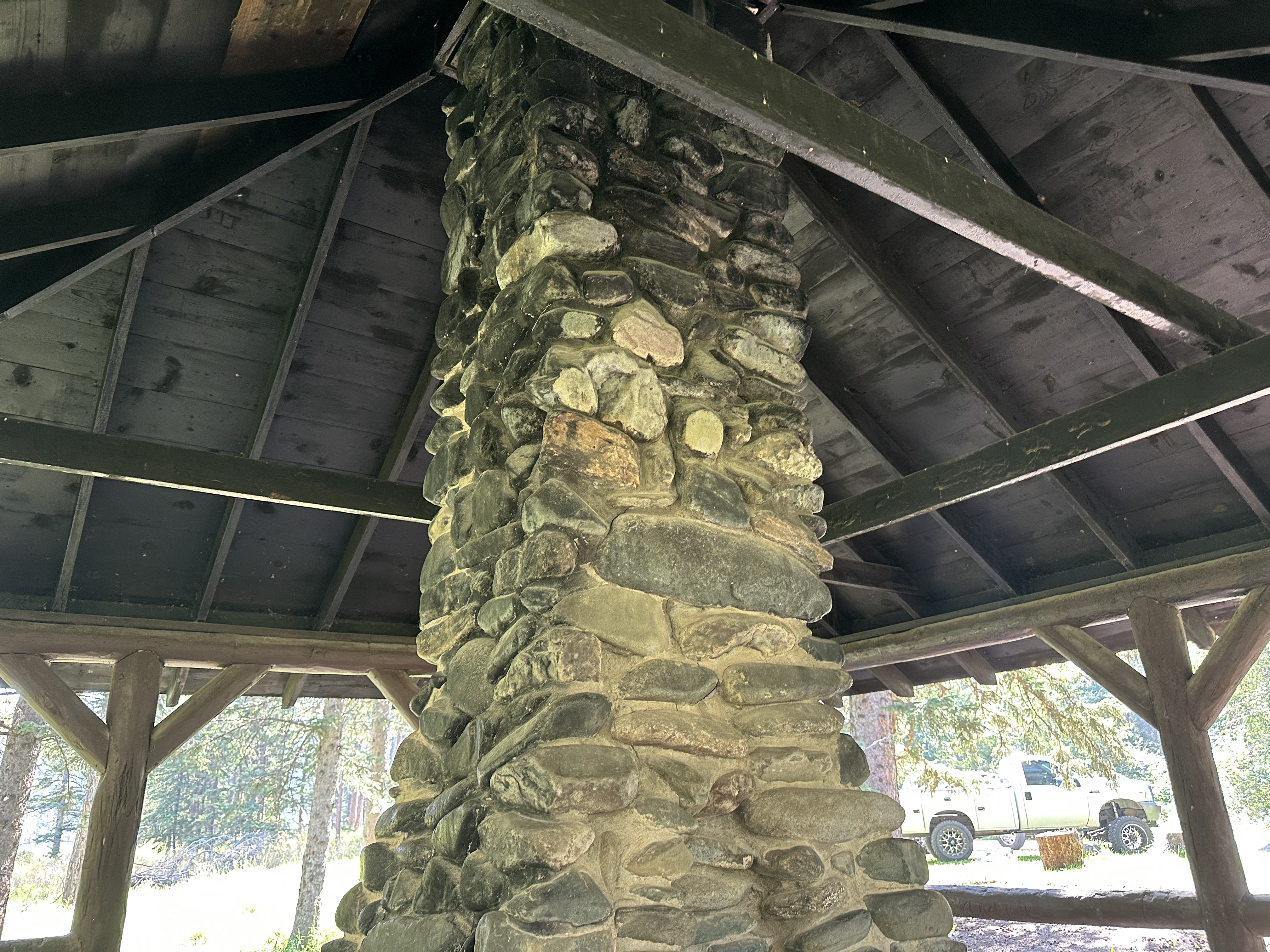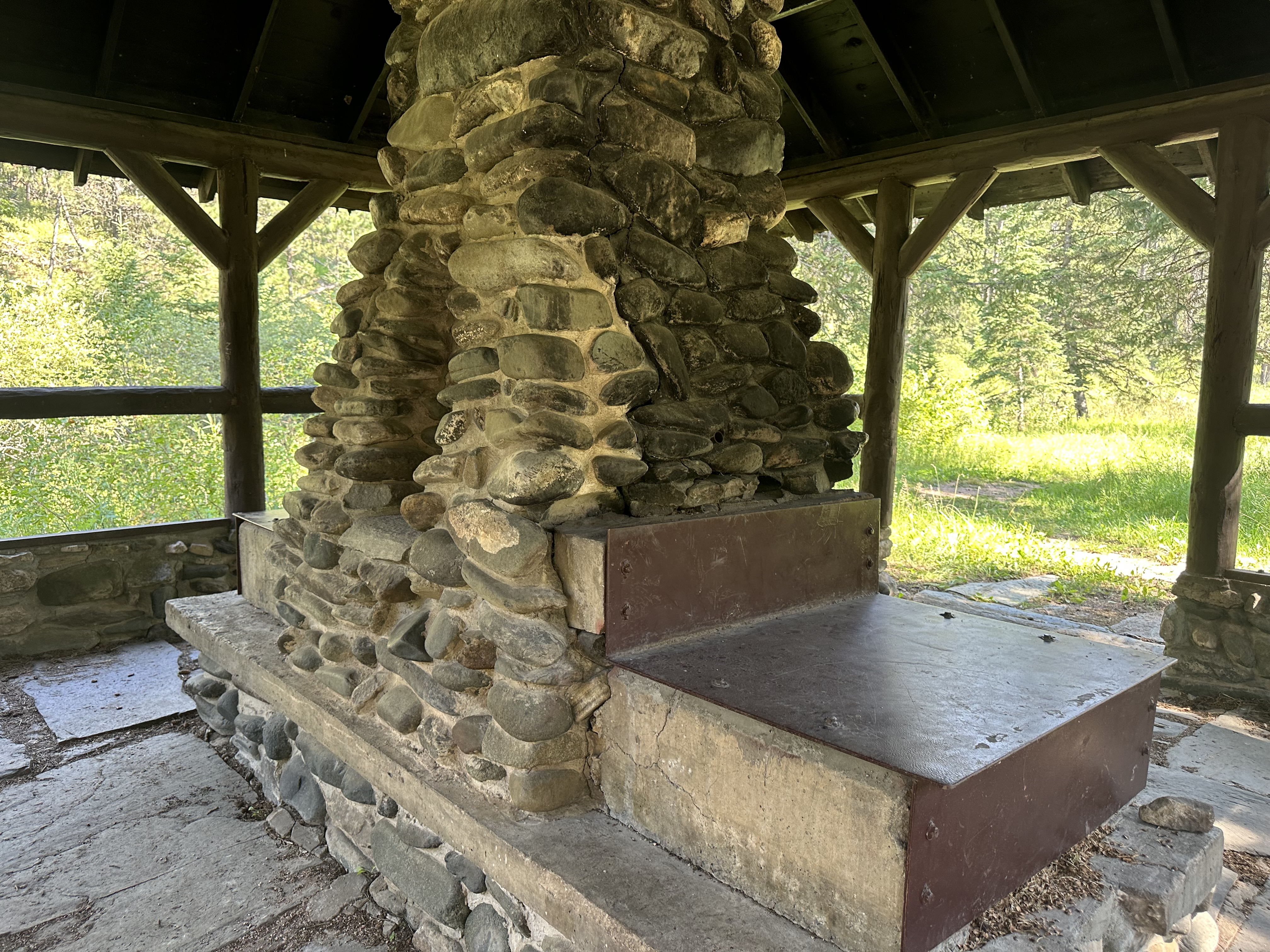Dalton Lake Pavilion, SD 2024

Close out the volunteer season in the grandeur of South Dakota’s Black Hills as we gear up to restore the rustic Dalton Lake Pavilion!
PROJECT PARTNER: Black Hills National Forest
SESSION DATES: October 20-25, October 27 – November 1, and November 3-8
PROJECT SUPERVISOR: TBD!
CREW LEADER: Ashley Aus!
Project Site Description & History
With quaint and unassuming beauty, the Dalton Lake Pavilion rests within the rugged landscape of South Dakota’s Black Hills. The Dalton Lake Campground, a humble but welcoming camping area, was constructed between 1935-1936 by Civilian Conservation Corps (CCC) enrollees from Camp Este in Nemo, SD. In addition to creating recreational campsites in Dalton Lake Campground, the CCC also built several footbridges, the dam and reservoir (i.e. Dalton Lake), and the Dalton Lake Pavilion. There were also a handful of other CCC projects which are no longer extant, including a well and well house, a changing house, and even a three-level ski jump with a nearby warming hut.
In its nearly 90-year lifetime, the Dalton Lake Campground has withstood many trials. Most notably, the campground was severely affected by floods in 1972, which largely destroyed the original CCC-era dam. The damn was rebuilt between 1972-1974. The Dalton Lake Pavilion withstood the floods, carrying on its historic legacy. The Dalton Lake Pavilion is distinct within the rustic style, likely unique to the Black Hills, or even to the Camp Este CCC-camp. The only other known CCC-era building with a similar style was a likely destroyed shelter from the former Spruce Tree Campground.
The Black Hills of South Dakota and Wyoming have long been held sacred by the indigenous people of the area. Derived from the Lakota language, the words “Paha Sapa,” meaning “hills that are black,” honor the dark, pine-covered hills rising several thousand feet above the surrounding prairie. In 1868, the United States government pledged that the Black Hills area would be “set apart for the absolute and undisturbed use and occupation” of the Souix people, as part of the Great Souix Reservation. However, after gold was discovered in the area in 1874, the United States confiscated the land and threatened inhabitants with starvation. The ownership and legacy of the Black Hills is still of great national importance, and is the subject of important activism.
Derived in 1897 as the Black Hills Forest Reserve, the now Black Hills National Forest was created as one of the preliminary preservation areas in the United States, after increased forest fires lead to legislation of the Timber Culture Act and Forest Reserve Act of 1891. The Dalton Lake Campground is a popular spot for fishing, hiking, and camping. The nearby Dalton Lake Trailhead provides access to the Centennial Trail which is open for hiking, horseback-riding and bicycling.




Location and Logistics
SESSION DATES: October 20-25, October 27-31, and November 3-8
Please plan to arrive at the campsite no earlier than 5pm and no later than 7pm on the first day of your session.
LOCATION: Located approximately an hour northwest of Rapid City, SD!
ACCESS: ![]()
![]()
![]()
![]()
![]()
![]()
Tents, truck-campers, campervans, trailers and RVs 25ft and under will have access to our campground. There is an unlimited amount of dispersed camping around the compound. Showers will not be available and dogs are allowed but must be leashed.
WEATHER: Anticipate highs in the upper 50s and lows in the 20s. Weather conditions may be rainy, cloudy, or sunny. Volunteers are responsible for checking weather conditions before their session begins, and packing appropriately.
Scope of Work
HistoriCorps is committed to educating and training volunteers in preservation skills, with an overarching mission of inspiring a preservation ethic in all those involved. Learning and working alongside expert HistoriCorps field staff, volunteers and applying the traditional skills necessary to restore the Dalton Lake Pavilion:
- Instal new roof
- Reconstruct half-round long knee wall
- Repair masonry and remove biological growth
- Replace stones in chimney
- Repair broken corners of fireplace apron
- Repair log railings and posts
- Improve drainage on west elevation
Please note: Tasks vary by day and by week, depending on a variety of factors including: weather, project priorities, previous groups’ work, and more. Though it is likely you will get to learn and practice most or all of the above tasks, it is not guaranteed. The higher percentage of the scope a particular task is, the more likely you will get to practice it.
Sign Up!
We’re thrilled this project has inspired you to volunteer!
CLICK HERE TO REGISTER!
Visit our Job Calendar to see spaces are available!
*All registrations submitted to projects at capacity will be automatically added to our waitlist.*
CANCELLATIONS effect our ability to complete projects. Please register only if you are certain about your ability to participate.
You will know your registration was successful when you receive a confirmation email. Contact volunteer@historicorps.org for assistance.
HistoriCorps does not charge for its volunteering projects. HistoriCorps relies on donations to continue engaging volunteers to save significant historical sites across America for generations to come. Your donation of any amount will make an incredible difference! Increase your impact – make a generous gift today.
Volunteer Logistics, Policies, and Advice
We’re so glad you’re interested in joining this project! If you’re new to our community, review the Volunteer FAQ first! Please note the following logistics and policies:
- Volunteering with HistoriCorps is free! We will provide all meals, tools, training, equipment, and a campsite or shared indoor lodging. Dinner is not provided on the first night.
- Volunteers are responsible for bringing their own gear, work gloves, sturdy work clothes and boots, and appropriate sleeping equipment. Check the average temperatures before you start packing – the nights and mornings may be colder than you anticipate! Then, read this advice about how to stay warm when tent camping in colder places.
- Campsite accessibility varies by project. Some projects can accommodate tents only; others can accommodate small RVs. Please review the project site description above for more information, and if you’re still not sure, email volunteer@historicorps.org for help.
- If this project does not offer showers, you might want to consider bringing a solar shower or research other methods to clean up after the work day.
- Volunteer crew sizes generally range from 4-8 volunteers, with two HistoriCorps staff that lead and train volunteers in the work.
- Safety is one of HistoriCorps’ top priorities, and volunteers can contribute to a safe working environment by ensuring their physical fitness is adequate for the work. See above for this project’s scope of work and difficulty level. Please, call us if you are not quite sure if a project is a good fit for your skills or fitness level. We may be able to suggest a project more suitable and enjoyable for you.
- Hard hats, eye protection, ear protection, gloves are standard personal protection equipment (PPE) required on all projects. Hard hats must be worn at all times on the project site, unless working in a designated safe space. Field staff will train volunteers on correct use of PPE.
- Dogs are generally allowed to accompany their humans in project campsites (actually, we love having dogs join us around the campfire!). Dogs are not permitted on the job site for everyone's safety. HOWEVER: HistoriCorps also follows the rules and regulations of our project partner. If the project partner does not permit dogs onsite then HistoriCorps is no exception. Please ask HistoriCorps or the project partner directly if you have any questions about whether Fido is welcome.

